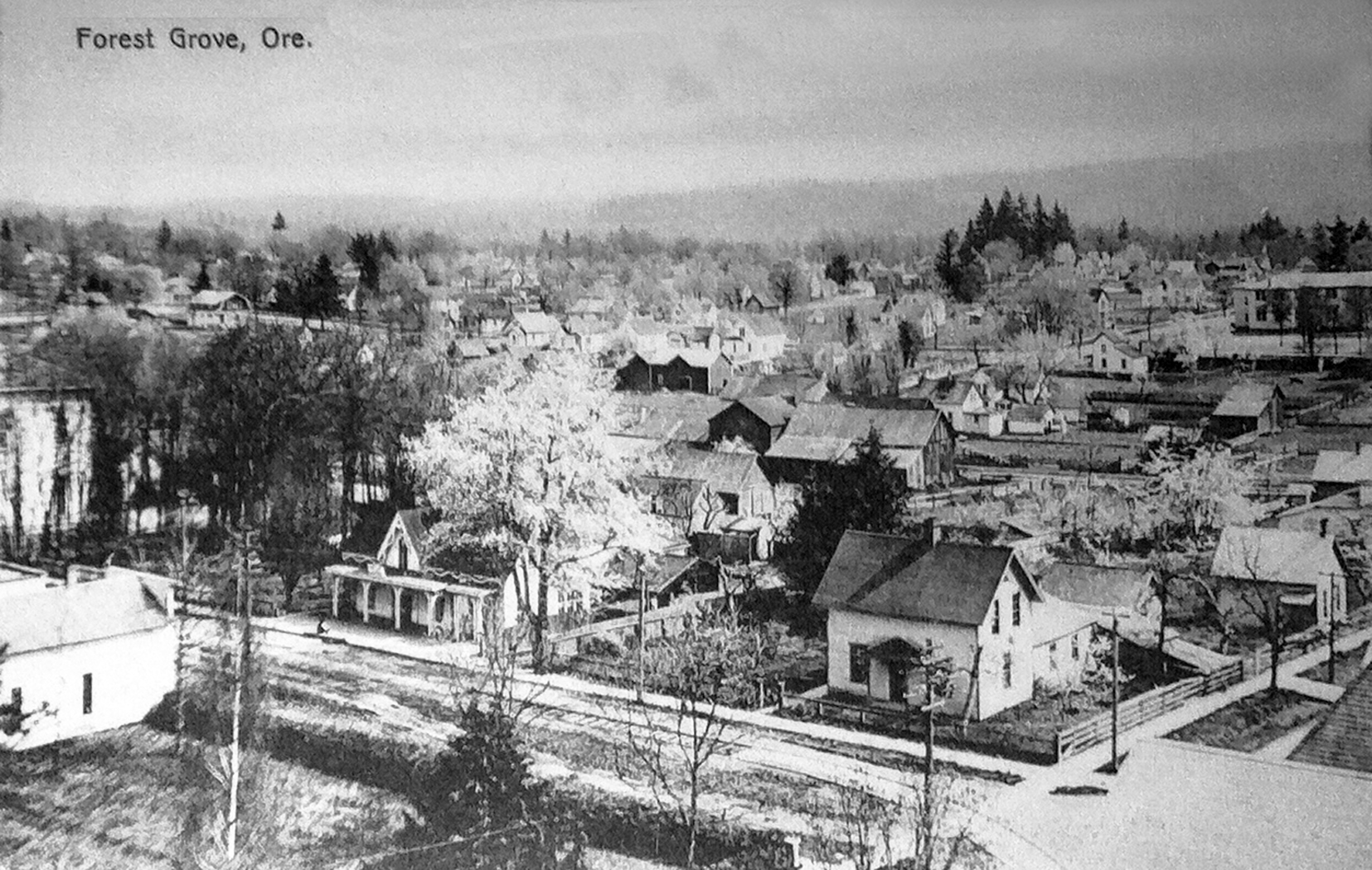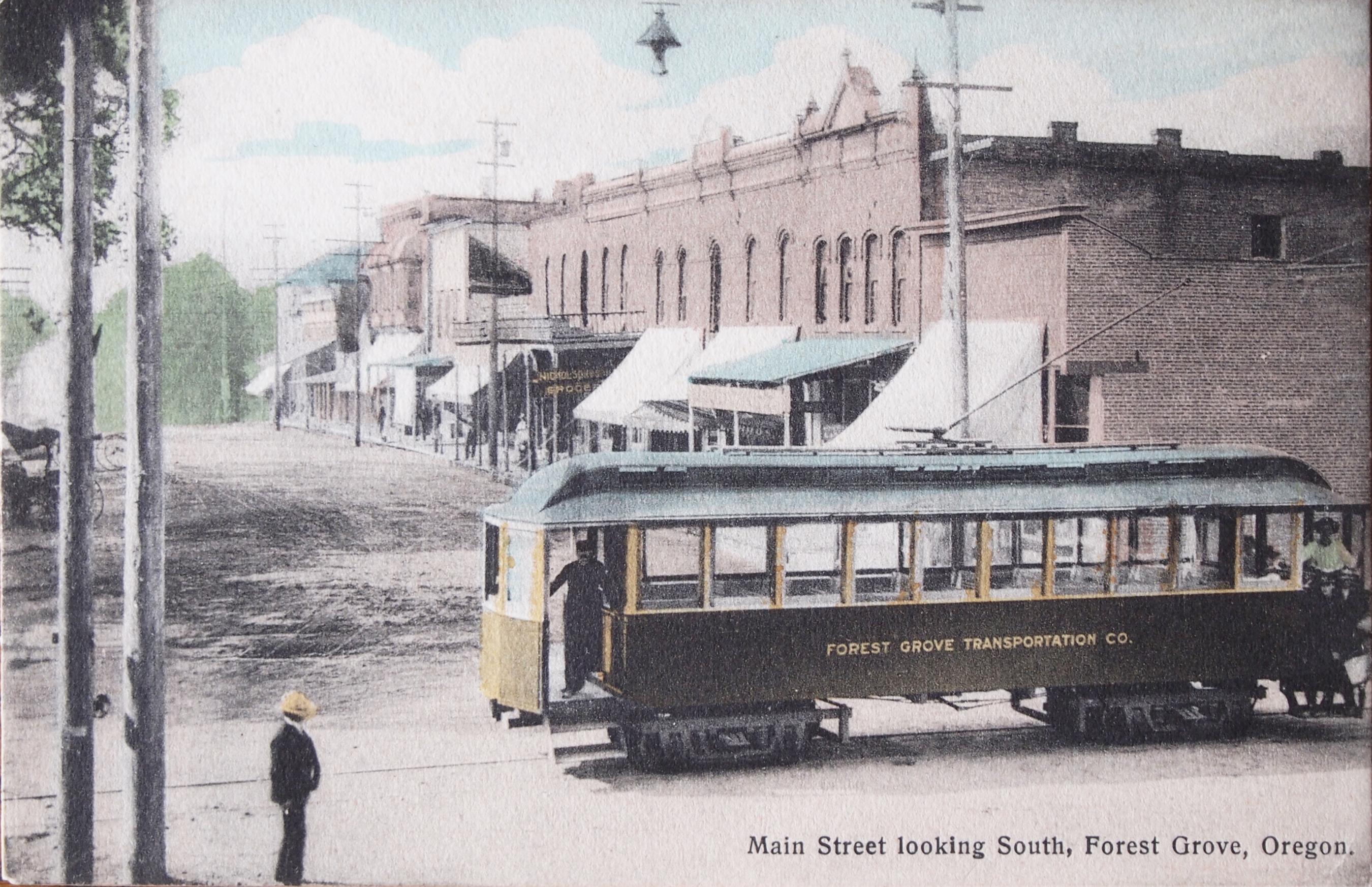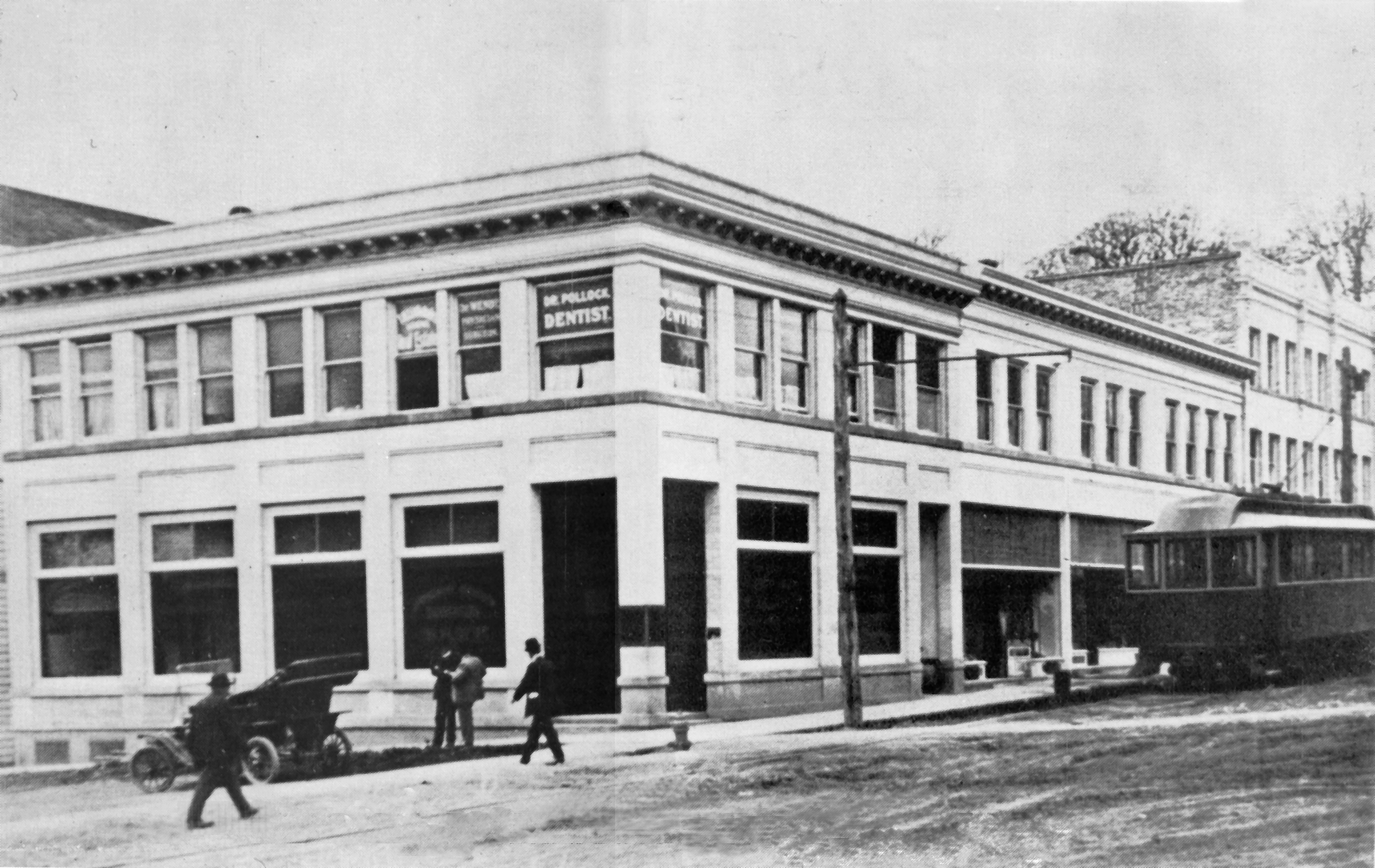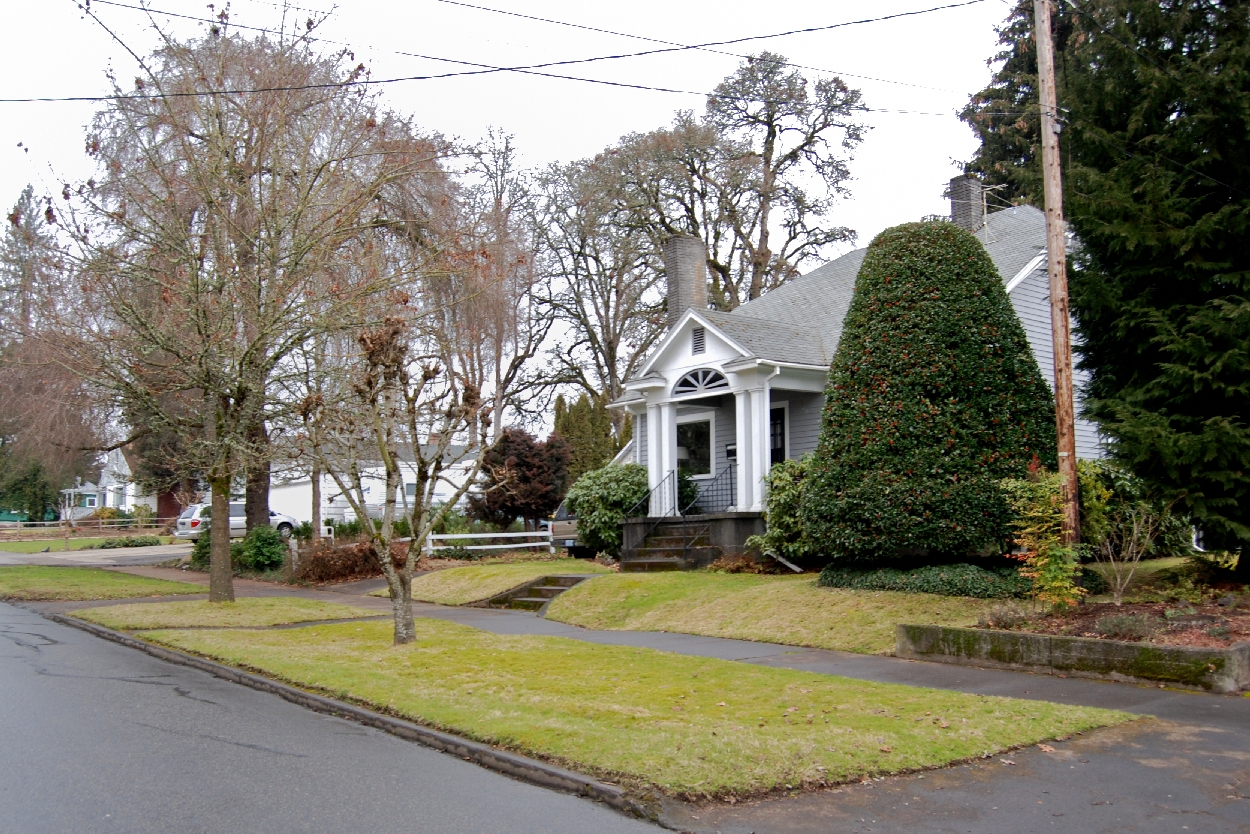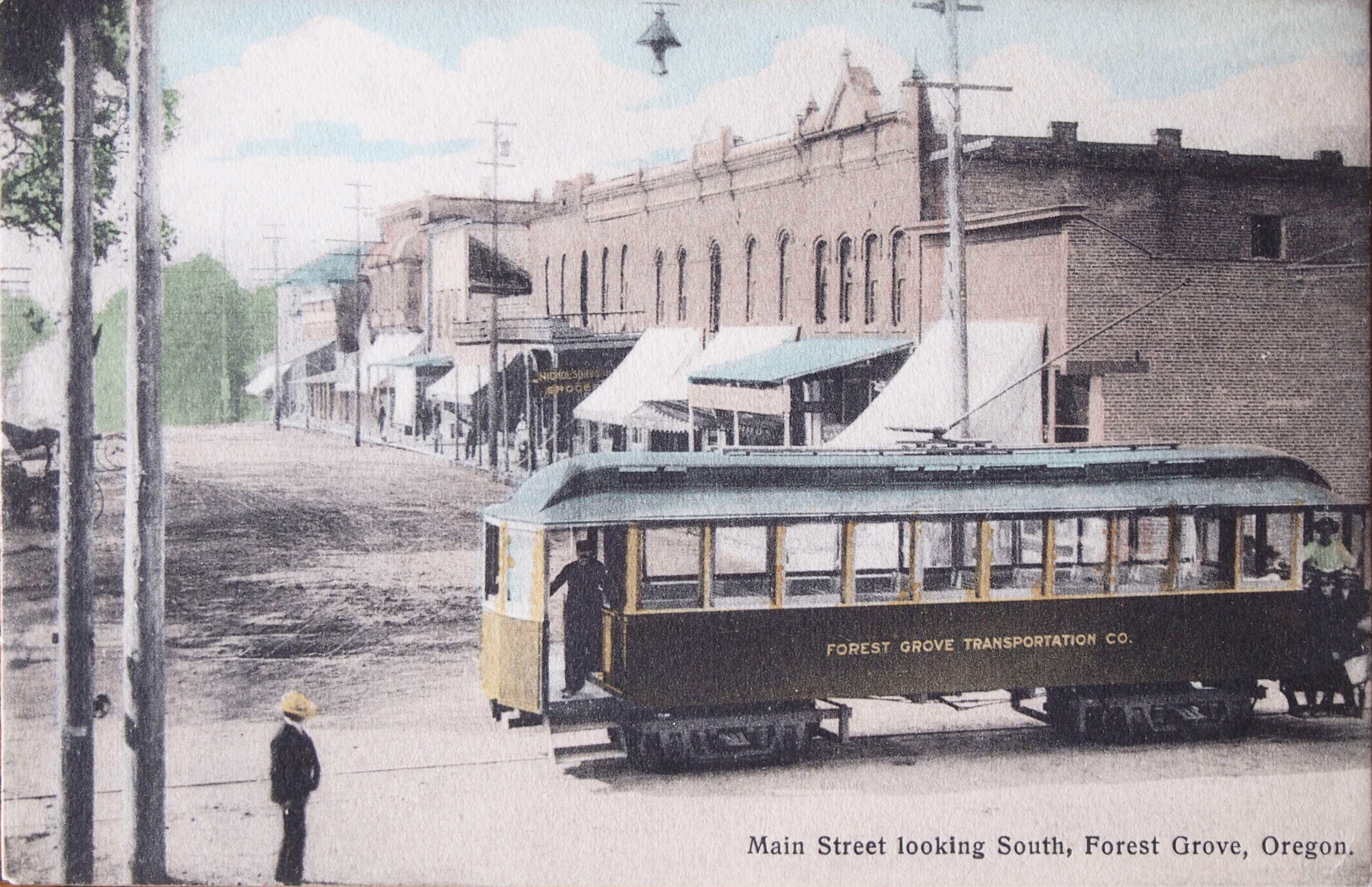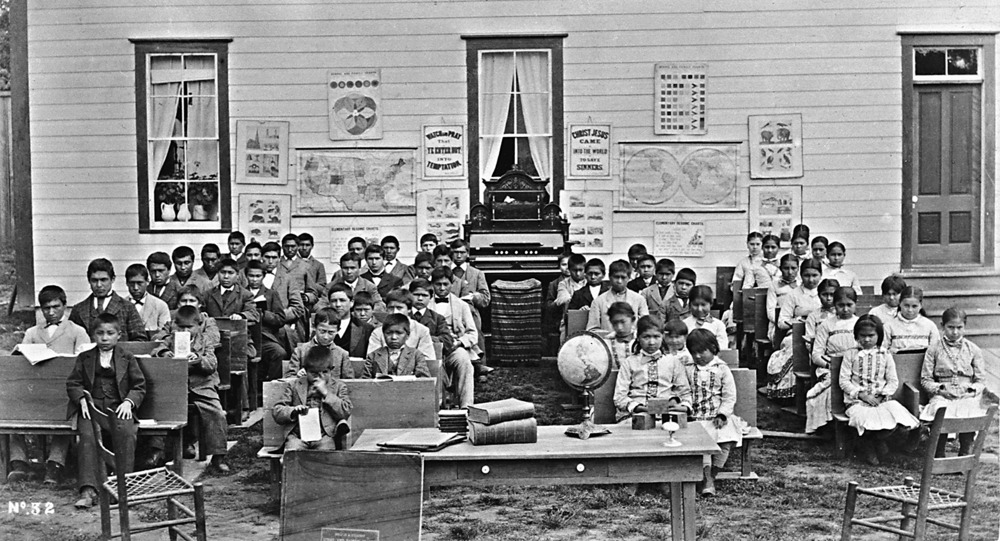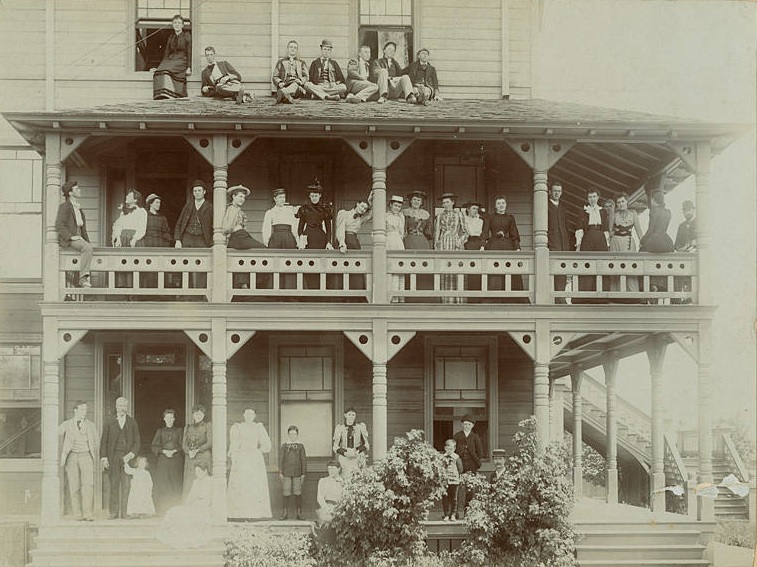Forest Grove is a city of approximately 26,225 residents located in the Tualatin Valley in central Washington County. The area was first populated by the Atfalati people, who lived mainly above the floodplain of the Tualatin River, south of the present-day town center. The Atfalati were Kalapuya who lived in the Willamette Valley and numbered about 15,000 at the time of their first encounters with EuroAmericans.
The earliest permanent white settlers were Alvin T. and Abigail Smith and Harvey and Emeline Clark, who arrived in 1841. The Smiths would settle a mile south of the city center on a Donation Land Claim. Their house, constructed in 1854-1856, is one of the earliest extant examples of wooden-peg construction in Oregon.
In 1848, Tabitha Brown and Harvey Clark founded an orphan asylum for children whose parents had died on the journey to the Oregon Territory. Rev. George Atkinson won their support in starting an academy nearby, and in 1849 the territorial legislature granted its first charter to the new school, Tualatin Academy. Five years later, the academy became Pacific University.
The name Forest Grove was adopted on January 10, 1851, by the Tualatin Academy Board of Trustees.
The university brought some diversity to the area’s economy, and by 1870 a mere third of the town’s 396 residents were employed in agriculture (in 1850, 77 percent of were farmers).
Rail service arrived in 1870, spurring development, but residents of Forest Grove refused to pay the Willamette Valley Railroad $30,000 for a depot and the company built the station a mile south of town. The town of Forest Grove was incorporated in 1872.
In 1880, the U.S. government oversaw the construction of the Forest Grove Indian Industrial and Training School, the first off-reservation institution of its type in the nation. In 1885, following a fire that damaged a number of its buildings, the school moved to a new location near Salem and was renamed Chemawa Indian School.
An unincorporated community grew around the Willamette Valley Railroad depot south of Forest Grove. Known as South Forest Grove, it was later dubbed Carnation after the flagship product of the Pacific Coast Condensed Milk Company, which opened the state's largest condensery there in 1902. The company was lured by the confluence of easy rail transportation and plentiful dairy suppliers. In 1900, Washington County boasted 2,302 farms, most of them clustered near Forest Grove and Hillsboro, and was the third largest producer of agricultural products in the state. In 2020, Forest Grove had a population of 22,225. Part of this growth came from expanding boundaries.
Carnation had a post office, a general store, a hotel, and other services. A streetcar service between Forest Grove and the depot launched in 1906, but it soon lost out to automobiles; the tracks were torn out in 1911. The Oregon Electric Railroad came to Forest Grove proper in 1908, and the Southern Pacific Railroad followed in 1912.
Carnation lost businesses and residents over the next few decades. The condensery shuttered its doors in 1929, and the post office closed in 1933. The Carnation Hotel, which had been converted to apartments, was destroyed by fire in 1969, removing one of the last vestiges of the area’s former success.
In the late twentieth century, Forest Grove attracted employment from technology firms such as Tektronix. The company spun off as the Merix Corporation in 1994 and remains Forest Grove's largest employer, with 10 percent of the city’s workers. At the turn of the twenty-first century, healthcare and education employed a quarter of the town’s workforce.
Forest Grove has twelve buildings on the National Register of Historic Places and three National Historic Districts: the Clark Historic district, located south of Pacific University on land once owned by Harvey Clark; the Painter’s Woods Historic District, an area platted in the late nineteenth century and sold as residential lots by R.M. Painter; and the Walker-Naylor District, west of Pacific University on the Thomas Naylor and Elkanah Walker Donation Land Claims.
-
![Pacific Ave., Forest Grove, 1911.]()
Forest Grove streetcars, Pacific Ave tracks, 1911.
Pacific Ave., Forest Grove, 1911. Courtesy Washington County Museum
-
![Silas Jacob Beeks Farmstead, NE of Forest Grove, 1900s.]()
Forest Grove, Silas Beeks farmstead, about 1900s.
Silas Jacob Beeks Farmstead, NE of Forest Grove, 1900s. Univ. of Oreg. Libr., Architecture & Allied Arts Libr., pna_01543
-
Forest Grove Indian Training School, OrHi 50121.
Forest Grove Indian Training School, about 1882. Photo Isaac Grundy Davidson, Oreg. Hist. Soc. Research Libr., OrHi 50121
-
![Forest Grove Transportation Company streetcar crossing Main St. on 21st Ave., Forest Grove, about 1907.]()
Forest Grove streetcars, crossing Main St, color, 1907.
Forest Grove Transportation Company streetcar crossing Main St. on 21st Ave., Forest Grove, about 1907. Courtesy Mary Jo Morelli, Friends of Historic Forest Grove
-
![Forest Grove Transportation Company streetcar in front of Forest Grove National Bank on Pacific Ave. at Main St., 1911.]()
Forest Grove streetcars, on Pacific Ave, 1911.
Forest Grove Transportation Company streetcar in front of Forest Grove National Bank on Pacific Ave. at Main St., 1911. Courtesy Mary Jo Morelli, Friends of Historic Forest Grove
-
!["A" St., Walker Naylor Historic District, Forest Grove, 2009.]()
Forest Grove, Walker Naylor Historic District, 2009.
"A" St., Walker Naylor Historic District, Forest Grove, 2009. Photo Margaret Marcusen, Univ. of Oreg. Libr. (and Oreg. State Historic Pres. Ofc.), pna_22684
Related Entries
-
![Forest Grove streetcar system]()
Forest Grove streetcar system
In 1906, E. W. Haines, an Oregon state senator and banker, led the Fore…
-
Indian Boarding Schools
At the beginning of the twenty-first century, only one Indian boarding …
-
![Pacific University]()
Pacific University
Pacific University, one of the oldest universities in the American West…
-
![Pacific University College of Optometry]()
Pacific University College of Optometry
The origins of the College of Optometry at Pacific University can be tr…
-
![Tabitha Moffat Brown (1780-1858)]()
Tabitha Moffat Brown (1780-1858)
Of the 158 names inscribed in the legislative chambers of the Oregon St…
Related Historical Records
Map This on the Oregon History WayFinder
The Oregon History Wayfinder is an interactive map that identifies significant places, people, and events in Oregon history.
Further Reading
"A Metropolis at Last." Washington County News, July 5, 1906.
"First for Farming." Washington County News, May 22, 1903.
Corning, Howard. Dictionary of Oregon History. Portland, Ore.: Binford and Mort, 1956.
Miranda, Gary and Rick Read. Splendid Audacity: The Story of Pacific University. Seattle: Documentary Book Publishers, 2000.

